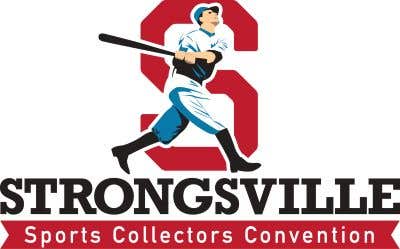Cards
Babe Ruth Exhibition at the Smithsonian explores Ruth’s life on and off the field
By John McMurray
An array of photographs and vintage items that help explain Babe Ruth’s star power, commercial appeal, personal story, and place in history are on display through May 21 at the Smithsonian Institution’s National Portrait Gallery. The exhibit, titled, “One Life: Babe Ruth” is a one-room display best suited for those who want to appreciate how Ruth’s legend grew and endured.
The vivid images of Ruth included in the exhibition are a particular highlight.
A 1915 photo shows Ruth, then 20, posing with fellow Red Sox pitchers George Foster, Carl Mays, Ernie Shore, and Dutch Leonard. Another shows Ruth warming up in 1921 with the Yankees. A 1920 studio portrait (now a reproduction since the original has been returned to the Library of Congress) along with an image where he is pictured kissing his bat prior to the 1926 World Series and Nickolas Muray’s well-known 1927 portrait are among those which capture Ruth’s presence as a player. Some images are well known and others, less so. Together, they effectively capture Ruth’s slugging as well as his fun-loving persona.
But the exhibition is as much about how Ruth was perceived than it is about his on-field accomplishments.
It includes a 1921 cover of Popular Science Monthly, relating to an article in the magazine that attempted to explain how Ruth generated his enormous power. The artwork from a 1976 Time magazine cover, portraying a giant-sized Ruth perched atop newly refurbished Yankee Stadium, speaks to Ruth’s stature among baseball greats. Conversely, a caricature on the cover of a 1933 issue of Vanity Fair portraying his “bigger-than-life persona” offers some implicit commentary on the bombastic, unrestrained side of Ruth, which according to the accompanying museum label, “could leave polite company shaking their heads.”
In the curatorial statement, historian James Barber of the Smithsonian Institution notes: “As big and bright as his celebrity star was, his natural disposition to be one of us, which is what I find most interesting about Babe Ruth.” A 1922 photograph where Ruth is surrounded by 5,000 boys who came to greet him in Syracuse, New York, or another from 1926 where he posed with children at St. Ann’s Home in Takoma, Washington, speak to that point.
“When you do an exhibition like this, it’s not just about the image itself,” Barber said. “It is also about the story behind the image. That’s where Ruth is just one of a kind. I say that Ruth led three lives. One is his personal life. Two, his baseball life. And three, there is Ruth’s secret life, meaning his winding and mysterious personal story, is ever present. The exhibition attempts to capture all three.”
The room containing the Babe Ruth exhibition has been used to portray lives of prominent Americans, from Walt Whitman to Katharine Hepburn.
“We decided it was Babe Ruth’s turn,” Barber said. “Any time is a good time to do Babe Ruth. We had never done an exhibition on him before. The room governs what you do, and being the Portrait Gallery as opposed to The Museum of American History, our specialty is portraiture in the many different mediums. There really are not many paintings of Babe Ruth. There are some wonderful caricatures and magazine covers, and we used a selection of those. What determined which material we used was a desire to show Babe Ruth from the beginning to the end of his life.
“On the caricature wall, there are three enlarged photos above the caricatures. These three sort of give you a snapshot of Babe Ruth’s world. One is a just incredible photo of Ruth in the midst of young boys. He is wearing a bowler hat, which he didn’t often wear. So that’s one world. The middle image is a favorite of mine: he is on the back of the L.A. Limited, which is the way he wanted to travel in the early 1920s. It was a train from Chicago to Los Angeles, and you were really traveling in style. It was all before airlines entered the scene. There are five or six Hollywood starlets with him, and this one is probably a publicity shot. And we also wanted to look at Babe Ruth’s career in baseball. A vintage bat and ball are in the exhibition. He is very collectible.”
There are several novelty items, from an issue of ‘Babe Ruth Sports Comics’ to a wrapper for ‘Ruth’s Home Run’ chocolate coated candy from 1928. “Clothes, toys, comic books, candy, chewing gum, cereal, smoking tobacco, books, movies — seemingly any item that bore the Babe’s name and picture was a potential moneymaker,” according to a label in the exhibition.
Barber said, however, that there were challenges in acquiring Ruth baseball memorabilia for the exhibition:
“I have done exhibitions on Daniel Webster, Theodore Roosevelt, and U.S. Grant, but this was the first baseball player. You can borrow items to display from Mount Vernon and Monticello and whatnot for other historical figures, but baseball collecting is really something different for me. I learned that baseball collectors really like to hold onto their items.
“So we were lucky to find a bat, and it was the one that Babe presented to the Mayor of Chicago, Big Bill Thompson, on September 17, 1920. That is part of the inscription which he wrote on the bat. The Yankees were in Chicago to play one of their last games of the season, against the Chicago White Sox. It was just a few days before the famous Black Sox trial for rigging the 1919 World Series, so it was roughly at the same time. And, of course, Ruth set the single-season home run record during that same year.”
An autographed baseball is included, signed “Little Mary from Babe Ruth,” alongside a Louisville Slugger bat used by Ruth in 1920. A label points out that the 42-ounce bat was especially heavy for its day, noting that most contemporary players use bats weighing less than 36 ounces. Of course, it would have been ideal if a vintage Ruth jersey, glove, or other personal effects had been included, though these two pieces more than suffice in a small exhibition.
Another focus of the exhibition is how Ruth connected with other contemporary stars and impacted those who later chased his records. Charles’ Verschuuren’s caricature of Ruth alongside star tennis player Bill Tilden, according to the label, “evokes the art deco iconography of the Jazz Age in the 1920s.” An image of Charles Lindbergh on the cover of the New York Journal in 1927 points to the contemporary focus on aviation, which overlapped with Ruth’s playing career, and images of Hank Aaron, Roger Maris, and Whitey Ford highlight their respective paths to eventually breaking Ruth’s records.
Viewers of the exhibition may wish that more personal Ruth items, including some vintage baseball cards, had been included.
“We didn’t use any baseball cards,” said Barber. “There can only be so many cases there. We figured that as rare as Babe Ruth baseball cards are, the medium of baseball cards is pretty well known. We would have liked to include the gold-plated crown (from when Ruth was crowned ‘King of Swat.’)”
Perhaps, too, the exhibition is tailored for those seeking an overview of Ruth rather than for students of the nuances of Ruth’s playing career. It is reasonable, however, to expect that an exhibition at the Smithsonian Institution would be designed to have more of a cultural focus than one at the Baseball Hall of Fame, and, in that respect in particular, this exhibition succeeds.
The exhibition attempts to examine Ruth, according to a label, “as an American original and a baseball legend who pursued all that life had to offer in a Herculean way.” That is a tall order, and it is perhaps inevitable that an exhibition designed to explain Ruth’s appeal and celebrate his accomplishments can only afford so much attention to his shortcomings.
Other than in an accompanying video, which concentrates on Ruth’s career storyline, his World Series appearances also receive little attention. At the same time, in a single room, the exhibition takes on the significant task of explaining Ruth’s rise, his appeal to the country and to baseball fans, his complicated personal life, how he died, was mourned, and remembered, his marketing cachet, and his enduring appeal. Indeed, that is a lot to cover.
This exhibition, located on the Gallery’s first floor not far from portraits of Benjamin Franklin and Alexander Hamilton and a bust of the Marquis de Lafayette, speaks to Ruth’s significant place in American culture. An online (http://npg.si.edu/exhibition/one-life-babe-ruth) description of the exhibition notes that “Ruth was arguably the most portrayed American from the beginning of his professional career in the major leagues, in 1914, to his death in 1948.”
For anyone interested in a firmer appreciation of Babe Ruth’s role in contemporary American life, this exhibition is an edifying experience and more than worth a visit during its remaining few weeks.
John McMurray writes about vintage collectibles for Sports Collectors Digest. He can be reached at jmcmurray04@yahoo.com.








